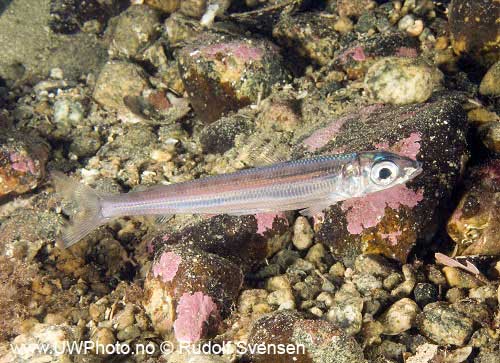| Argentinidae (Argentines or herring smelts) |
| 70 cm SL (male/unsexed); max. reported age: 35 years |
|
bathypelagic; marine; depth range 55 - 1440 m, oceanodromous |
| Eastern Atlantic: Svalbard to west coasts of Scotland and Ireland, deeper parts of North Sea and across the Wyville Thomson ridge to Denmark Strait. Western Atlantic: Davis Strait to George's Bank in Canada. Arctic Ocean: east to Finnmark, Norway, Barents Sea (Ref. 86838). |
|
Dorsal soft rays (total): 11-13; Anal soft rays: 11-17. Scales with tiny spines on exposed parts. Dorsal fin begins above or nearly above tip of pectoral fin (Ref. 7251). Swim bladder elongated and silvery. Body slender to robust (Ref. 37473). |
| Bathypelagic (Ref. 58426). Prefer depths of 182.8-255.9 m, temperature 7-10°C and mean salinity 34 ppt (Ref. 5951). Probably form schools close to the bottom. Feeds on planktonic invertebrates including euphausiids, amphipods (arrow worms, krill and Thermisto (Ref. 5951)), chaetognaths, squids and ctenophores, also small fishes. Spawns from April to July (Ref. 4773). Growth is slow. Eggs and young are pelagic at depths of 400-500m. Used fresh or in fish meal production (Ref. 35388). |
|
Not Evaluated (N.E.) Ref. (130435)
|
| harmless |
Source and more info: www.fishbase.org. For personal, classroom, and other internal use only. Not for publication.
